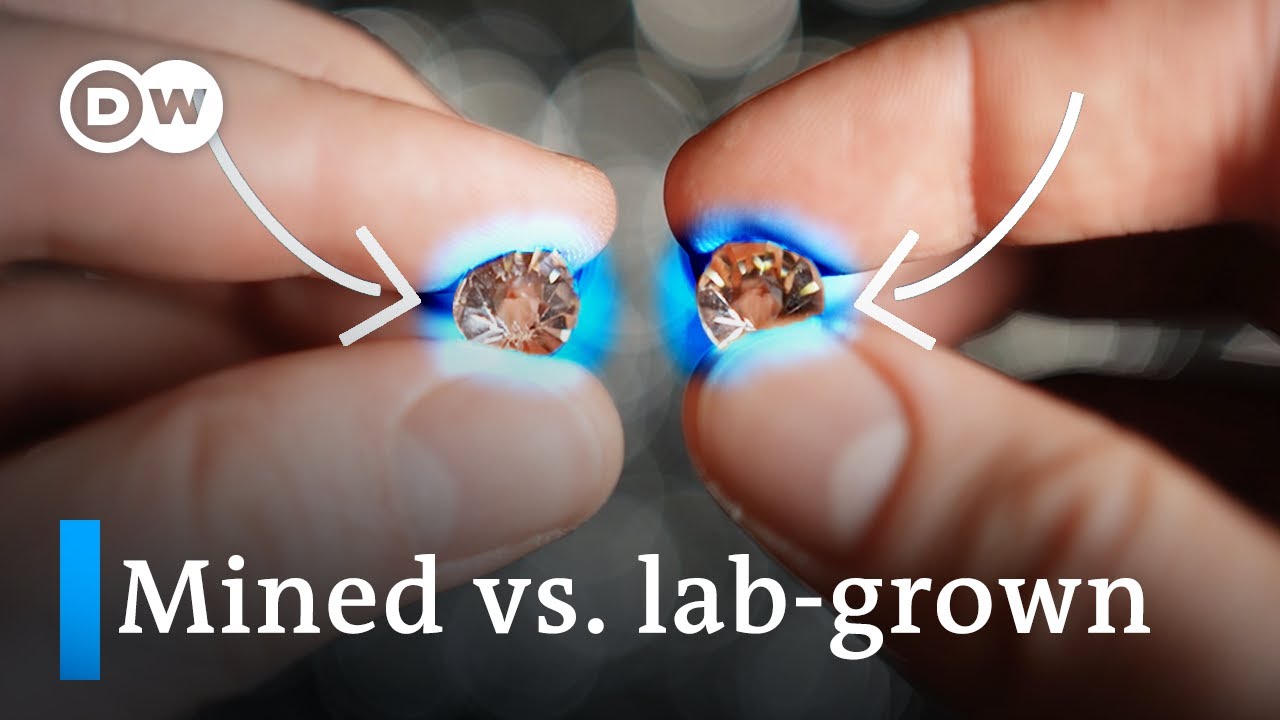Blood Diamonds - The Dark Side Of The Diamond Trade
The diamond industry is one of the most profitable and prestigious industries in the world, but it has a dark side that many consumers are unaware of. The term "blood diamonds" refers to a diamond that has been mined in a war zone and sold to finance armed conflict against governments.
The sale of these diamonds often funds brutal civil wars and human rights abuses, making the diamond trade one of the most unethical and dangerous industries in the world.
The History Of Blood Diamonds
The term "blood diamond"was first coined in the late 1990s after brutal civil wars broke out in countries like Sierra Leone, Angola, and the Democratic Republic of Congo. These wars were fought over control of diamond mines, and the profits from the sale of these diamonds were used to finance the armed conflict.
In some cases, rebel groups would enslave entire communities and force them to work in the mines, using the diamonds to fund their brutal campaigns of terror. The sale of these diamonds often resulted in the displacement of entire communities, the destruction of local ecosystems, and the violation of human rights.
The Response To Blood Diamonds
The international community has responded to the issue of blood diamonds in a number of ways. In 2000, the United Nations General Assembly passed a resolution calling for the development of an international certification scheme for rough diamonds. This scheme, known as the Kimberley Process Certification Scheme(KPCS), aims to ensure that diamonds are not used to finance armed conflict.
Under the KPCS, participating countries must certify that their diamond exports are conflict-free and that they have been mined under ethical and environmentally responsible conditions. The scheme has been successful in reducing the trade in blood diamonds, but it has also been criticized for its lack of transparency and effectiveness.

25 Things You Should Know About Blood Diamonds
The Importance Of Consumer Awareness
One of the key factors in reducing the trade in blood diamonds is consumer awareness. As consumers become more informed about the ethical and environmental issues associated with the diamond trade, they can make more informed purchasing decisions and support companies that are committed to ethical and sustainable practices.
In recent years, there has been a growing trend of consumers seeking out ethical and sustainable products, including diamonds. This has led to an increase in demand for diamonds that have been certified as conflict-free, and many companies have responded by implementing more ethical and sustainable practices.
However, consumer awareness is still an ongoing issue. Many consumers are still unaware of the issue of blood diamonds and the impact that their purchasing decisions can have on the diamond industry. It is important that we continue to educate consumers about this issue and encourage them to make more ethical and sustainable purchasing decisions.
The Role Of Government And Industry
While consumer awareness is important, it is also important that governments and the diamond industry take responsibility for addressing the issue of blood diamonds. Governments can play a role by implementing regulations and policies that ensure that diamonds are sourced and traded ethically.
The diamond industry also has a responsibility to address this issue. Many companies have already taken steps to implement more ethical and sustainable practices, but more needs to be done to ensure that all diamonds are mined and sold ethically.

Blood Diamonds and Religious War In The Central African Republic
The Future Of The Diamond Trade
The diamond industry is at a crossroads. On the one hand, there is increasing pressure to address the issue of blood diamonds and implement more ethical and sustainable practices. On the other hand, there is still a demand for diamonds that are seen as prestigious and valuable.
The future of the diamond trade will depend on how the industry responds to these competing pressures. If the industry continues to ignore the issue of blood diamonds and fails to implement more ethical and sustainable practices, it risks losing the trust and support of consumers.
However, if the industry takes a proactive approach and works to address this issue, it has the potential to create a more sustainable and ethical diamond trade that benefits everyone involved.
The Impact Of Blood Diamonds
The impact of blood diamonds goes beyond the human rights abuses and environmental damage associated with their mining and trade. It also has economic consequences for the countries and communities where diamonds are mined.
In many cases, the profits from the diamond trade are used to fund conflicts and war, perpetuating cycles of violence and instability. This can have devastating consequences for local communities, including displacement, poverty, and a breakdown of social structures.
Furthermore, the diamond industry has historically been associated with exploitative labor practices and environmental degradation, including deforestation and pollution. Addressing the issue of blood diamonds requires not only addressing the issue of conflict diamonds, but also ensuring that diamonds are mined and traded in a way that respects human rights and the environment.
Examples
The impact of blood diamonds has been devastating for many countries in Africa. In Sierra Leone, for example, the civil war that raged from 1991 to 2002 resulted in the deaths of an estimated 50,000 people, many of whom were victims of the brutal tactics used by rebel groups.
In addition to the loss of life, the sale of blood diamonds has also had a profound economic impact on many African countries. In some cases, the diamond trade has fueled corruption and instability, making it difficult for these countries to develop a stable and prosperous economy.
Ethical And Sustainable Alternatives
There are ethical and sustainable alternatives to blood diamonds that consumers can support. For example, lab-grown diamonds are a sustainable and ethical alternative to mined diamonds. These diamonds are created in a laboratory using advanced technology and have the same physical and chemical properties as mined diamonds.
In addition, many companies are now offering diamonds that have been certified as conflict-free, meaning that they have been mined and traded in a way that respects human rights and does not fund conflicts.
By supporting these ethical and sustainable alternatives, consumers can help to drive demand for diamonds that have been produced and traded in a way that is both ethical and sustainable.

Why lab-grown diamonds are better than mined diamonds
The Importance Of Collaboration
Addressing the issue of blood diamonds requires collaboration and cooperation between governments, the diamond industry, and consumers.
This includes implementing regulations and policies that ensure that diamonds are mined and traded ethically, promoting consumer awareness and education, and supporting companies that are committed to ethical and sustainable practices.
It is important that we all take responsibility for addressing this issue and work together to create a more ethical and sustainable diamond industry. By doing so, we can help to ensure that diamonds bring joy and beauty to our lives without causing harm to others or the environment.
People Also Ask
Why Do They Call Them Blood Diamonds?
The term "blood diamonds" refers to diamonds that have been mined in war zones and sold to finance armed conflict against governments. The profits from the sale of these diamonds have been used to fund wars, civil wars, and human rights abuses. The term "blood" refers to the human rights abuses and environmental damage associated with the mining and trade of these diamonds.
Do Blood Diamonds Still Exist?
While the diamond industry has taken steps to address the issue of blood diamonds, they still exist. The Kimberley Process Certification Scheme (KPCS), a joint government, industry, and civil society initiative, was established in 2003 to prevent the trade in conflict diamonds.
While the KPCS has made progress in reducing the trade in conflict diamonds, there are still reports of diamonds being mined and traded in ways that violate human rights and support conflicts.
Are Blood Diamonds Illegal?
The trade in blood diamonds is illegal under international law. The United Nations has adopted several resolutions aimed at ending the trade in conflict diamonds, and the Kimberley Process Certification Scheme (KPCS) was established to prevent the trade in conflict diamonds.
However, enforcement of these laws and regulations can be difficult, and there are still reports of diamonds being mined and traded in ways that violate human rights and support conflicts. Other strange diamonds from Africa like green diamonds are not under regulation of blood diamonds, you can check moreabout that kind of diamonds in this article from Bernardine.com.
Conclusion
The issue of blood diamonds is a complex and multi-faceted one that requires a concerted effort from all of us to address. While progress has been made in reducing the trade in conflict diamonds, much more needs to be done to ensure that all diamonds are mined and traded in a way that is both ethical and sustainable.
By supporting ethical and sustainable alternatives, promoting consumer awareness, and working together to create a more ethical and sustainable diamond industry, we can make a difference and help to ensure that diamonds bring joy and beauty to our lives without causing harm to others or the environment.
